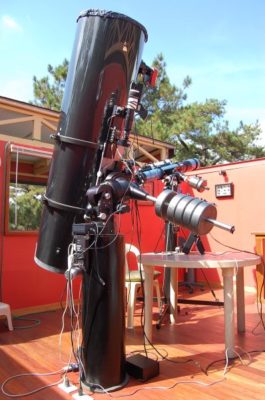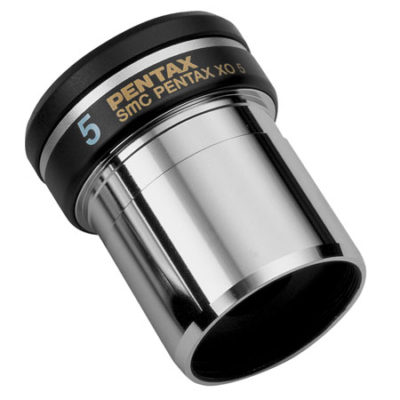It was with considerable curiosity that I first learned of Vixen’s newly announced Polarie mount on December 2011. I have always been on the look out for the smallest, lightest, high quality, and dare say, lowest cost DSLR camera tracking grab-and-go mount available. The Polarie specs were quite impressive. It boasted a durable 144 tooth aluminum RA gear and a brass worm mated to a stepper motor to turn it in two polar bearings. It weighed only 1.4lbs and was capable of a 3.4lbs payload. It required only two AA batteries for 4 hours of operation and was small enough to easily fit in one’s pocket. It was made in Japan and cost only $399. Without further ado, I ordered one for $399 from OPT.
The Polarie mount arrived in a small well packed box. Initial inspection struck me as being of good quality and build. At a quick glance, the mount appeared like a rather odd looking point-and-shoot camera complete with a dummy hot shoe for attaching a flash. The mount features a built-in illuminated inclinometer, compass, and peep sight to aim at Polaris. These features are helpful for rough polar alignment but an optional polar scope is a definite must-have to obtain the more precise alignment required for astrophotography. Happily for me, a polar alignment scope from another mount fit perfectly with the Polarie and saved me the additional time and expense of having to order one. The mount also requires two alkaline AA batteries, a tripod, and an articulating ball head as a means to attach the mount to a camera and be able to point it to any part of the sky. With all those, the mount is ready for easy setup and operation in a few minutes.
![]()
I tested my new mount with an old but lightweight tripod, a Manfrotto ball head, and Nikon D7000 with an 18 – 105mm zoom lens. The combined weight of the ball head, camera, and lens totaled at slightly over the 3.4lbs payload limit claimed by Vixen. I set my lens at 105mm, its highest magnification, to immediately determine how well or poorly the mount tracks. I used a polar scope to more accurately align the mount with the North Star, Polaris. It took around five minutes to polar align the mount and set up the camera for imaging. The process is easy even out in the field with no lights. I took one 30 second image of Orion’s belt and sword with the mount turned off, and another image with the Polarie turned on. The results speak clearly for themselves. The first image shows stars trailing after just 30 seconds. The second image exhibits the Polarie is capable of decent unguided tracking even at relatively high magnification.
![]()
In conclusion the Polarie is everything I was looking for. It is small, lightweight, low cost, easy to use, and very accurate for a DSLR camera tracking mount. It makes doing grab-and-go astrophotography in the field an easy and enjoyable proposition rather than a daunting time consuming task.



